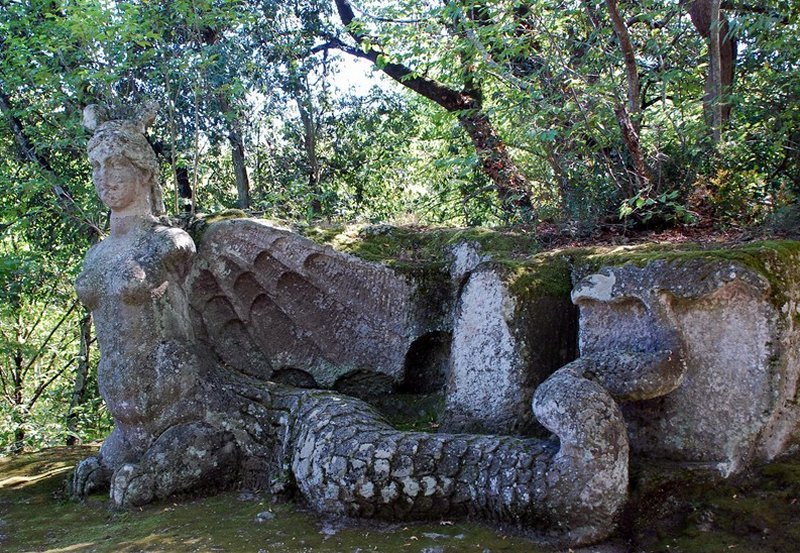Greek mythology is full of terrible monsters. Although it is difficult to choose the worst or most terrible of the Greek monsters, Typhon and Echidna are strong contenders.
Echidna is a hybrid creature in Graeco-Roman mythology, a massive half-woman and half-snake. She was a terrible serpent from the waist down, despite being a tall, charming, and gorgeous woman. In other words, Hesiod’s ‘impossible monster’ Echidna is a magnificent creature and the mother of a pantheon of violent spirits who, among many other hideous spirits, personified dark powers.

These forces were generated during the early days of the gods’ deadly warfare. Some of these animals survived the wars and continue to terrorize and harm people. Echidna was the offspring of the primal gods Gaia and Tartarus (or Chrysaor and Callirhoe), and she never aged. With her brother and spouse Typhoon, she was the proud mother of many scary offspring.

She represented the earth’s degradation, decay, and illness. Cerberus (Kérberos), the two-headed hound Orthos, who guarded Geryon’s herds and was killed by Heracles, the goat/lion/serpent Chimera, the Nemean Lion, the Sphinx, and the Eagle that ate Prometheus’ liver were among them.
Another amazing and terrifying child of hers was the Griffin Vulture, a gigantic bird from Graeco-Roman mythology, and most likely Ladon, the many-headed watchful, dragon-like snake that guarded the sacred garden, the Golden Apples of the Hesperides. According to Pindar (Pindarus), an ancient Greek lyric poet from Thebes who lived between 518 and 438 BC, Echidna gnawed into the light from her mother’s womb. She dwelt in a grotto near Scythia, and she regularly surfaced, revealing only her human parts to seduce human guys. She would instantly embrace and swallow her victims after capturing them in her serpentine coils.

According to Herodotus, Greeks in Pontus, a province on the Black Sea’s southern shore, told a narrative about an encounter between Heracles, Zeus’ son and a celestial hero in Greek mythology, and this snaky female creature. Heracles drove Geryones’ cattle through what would ultimately become Scythia. He awoke one morning to find that his horses had vanished. He “discovered a monster of double shape in a cave that was half maiden and half serpent” while looking for them. She had the horses and promised to give them back if Heracles had s..e..x with her. Heracles accepted, and she bore him three sons: Gathyrsus, Gelonus, and Scythes.
She asked Heracles what she should do with his sons: “Shall I keep them here (since I am the queen of this country), or shall I send them away to you?”. Heracles gave her a bow and belt and told her that when the boys grew up, whomever drew the bow and wore the belt would keep him and cast out the others. Scythes, the youngest son, met the conditions and founded the Scythians.
Death Of Echidna
Many versions of the myths are associated with Echidna, known as the “mother of all monsters.” One says Hercules, Bellerophon, or Oedipus killed her. Αccording to another, she was strangled in her sleep by Αrgos Panoptes, a giant with a hundred (or three-hundred eyes) who was Hera’s servant. The killing of the serpent-legged monster Echidna as she slept in her cave was believed to be Αrgos’great achievement for the Olympian pantheon.

Echidna, according to another legend, was immortal. According to Hesiod (‘he who emits the voice,’ an ancient Greek poet who thrived around 700 BC), Zeus left her on Earth after the Titans’ defeat so that she and her progeny could eventually battle heroes.
Most myths and legends about Echidna center on her famed and terrifying monster offspring.
Αs told in the Iliad, the hero Bellerophon was ordered by the king of Lycia to kill the Chimera. The truth is the king wanted rather than the Chimera to kill Bellerophon, but the hero, who the gods miraculously protected, succeeded in killing Echidna’s monster-child, Chimera, who Bellerophon shot with an arrow.
Src: fancy4work.com








